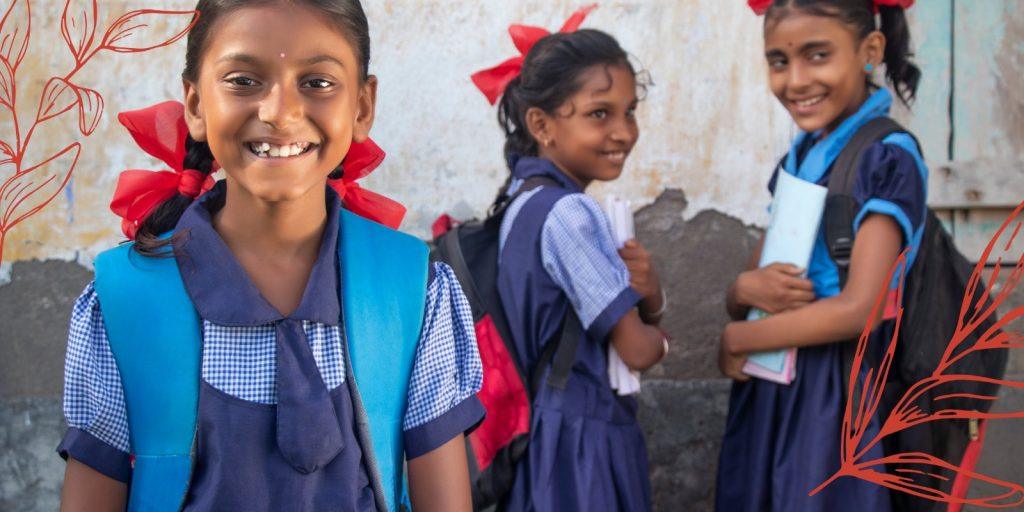Menstrual Hygiene in India has always been in a worrisome state. Studies have revealed that about 71% of the girls in India are not aware about periods when they first get them. And to make this matter worse, early menstruation, also known as precocious puberty, in Indian children, especially those living in urban India, is on rise. Below given are the 7 reasons that can be attributed to this phenomenon.
📣 Obesity: It is a significant factor contributing to early menstruation. Higher body mass index (BMI) can lead to increased levels of leptin, a hormone that can trigger early puberty. A study published in the Journal of Clinical Endocrinology & Metabolism found that girls with higher BMI are more likely to experience earlier onset of puberty. In India, the prevalence of obesity in children has been rising, with a study showing that approximately 14.4 per cent of children aged 5-18 years are overweight or obese.
📣 Endocrine Disruptors: Exposure to endocrine-disrupting chemicals (EDCs) found in pesticides, plastics, and personal care products can interfere with hormonal balance, leading to early puberty. EDCs mimic or interfere with the body’s hormones, particularly estrogen, which can accelerate the onset of puberty. A study highlighted that Indian children are increasingly exposed to EDCs, with significant levels detected in their blood and urine samples.
📣 Genetic Factors: Genetics plays a crucial role in determining the timing of puberty. Children with a family history of early menstruation are more likely to experience it themselves. Research indicates that the age of menarche (the first menstrual period) is strongly influenced by genetic factors. Studies have shown that if the mother experienced early menarche, there is a higher likelihood that her daughter will too.
📣 Nutrition and Diet: Improved nutrition and diet can lead to earlier physical development and puberty. High-calorie diets and consumption of processed foods are linked to early menarche. Better nutritional status is associated with earlier onset of puberty because it provides the necessary energy and nutrients for growth and development. In India, increased access to high-calorie diets and fast food has been noted, contributing to rising cases of early puberty.
📣 Psychosocial Stress: Children exposed to high levels of stress, whether from familial, social, or economic sources, may experience earlier onset of puberty. Studies suggest that psychosocial stress can lead to hormonal changes that trigger early puberty. Research in India indicates that children in high-stress environments, such as those with familial discord or socioeconomic challenges, are at increased risk for early puberty.
📣 Urbanisation and Lifestyle Changes: Urbanisation and the associated lifestyle changes, such as reduced physical activity and increased exposure to artificial lighting, can influence the timing of puberty. Urban lifestyle factors, including exposure to artificial light and sedentary behaviour, have been linked to early onset of puberty. Rapid urbanisation in India has led to significant lifestyle changes for children, contributing to a trend towards earlier puberty.
📣 Healthcare Access and Awareness: Better healthcare access and awareness lead to earlier diagnosis and reporting of puberty-related changes. Increased healthcare access allows for earlier detection and documentation of pubertal changes. In India, improved healthcare infrastructure and awareness programs have led to more cases of early menstruation being reported and addressed.
With girls starting periods as early as 8 years of age, the need to create awareness early on is crucial, as 26 million girls can be at the risk of dropping out of school without period education and access to period products. Studies have found that one out of five girls could be dropping out of school due to lack of period education and access to period products.
References:
- Journal of Clinical Endocrinology & Metabolism
https://academic.oup.com/jcem/article/101/9/3204/2709340 - Obesity Reviews https://onlinelibrary.wiley.com/doi/10.1111/obr.12735
- Indian Journal of Pediatrics
https://link.springer.com/article/10.1007/s12098-020-03424-0 - Environmental Health Perspectives
https://ehp.niehs.nih.gov/doi/10.1289/EHP3283 - International Journal of Hygiene and Environmental Health
https://www.sciencedirect.com/science/article/pii/S1438463917304034 - Nature Genetics https://www.nature.com/articles/ng.3050
- Human Reproduction https://academic.oup.com/humrep/article/29/8/1706/2915643
- The American Journal of Clinical Nutrition
https://academic.oup.com/ajcn/article/104/6/1539/4569807 - Journal of Nutrition and Metabolism https://www.hindawi.com/journals/jnme/2012/583520/
- Pediatrics https://pediatrics.aappublications.org/content/121/1/e104
- Indian Journal of Psychiatry
https://www.indianjpsychiatry.org/text.asp?2017/59/3/283/216117 - Journal of Adolescent Health
https://www.jahonline.org/article/S1054-139X(17)30291-0/fulltext - Urban Studies Journal
https://journals.sagepub.com/doi/abs/10.1080/00420980120087081 - BMC Public Health
https://bmcpublichealth.biomedcentral.com/articles/10.1186/s12889-018-5036-y - Journal of Pediatric Endocrinology and Metabolism
https://www.degruyter.com/document/doi/10.1515/jpem-2019-0324/html
It is heartening to see Whisper – India’s leading feminine-care brand, from the house of Procter & Gamble, is raising awareness about – the early onset of menstruation among young girls – as part of the fifth edition of its Keep Girls In School (KGIS) movement.


